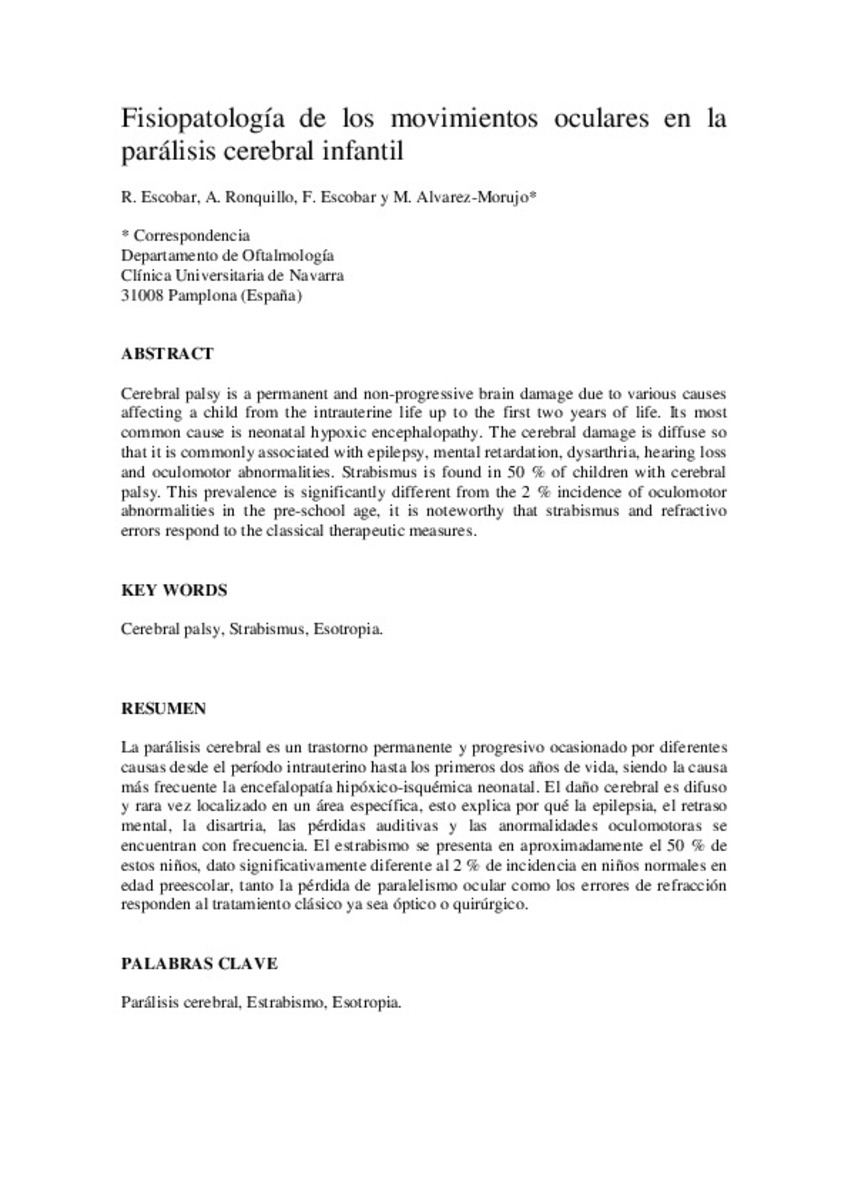Full metadata record
| DC Field | Value | Language |
|---|---|---|
| dc.creator | Escobar, R. (R.) | - |
| dc.creator | Ronquillo, A. (A.) | - |
| dc.creator | Escobar-Borrego, F.J. (Francisco Javier) | - |
| dc.creator | Alvarez-Morujo, M. (M.) | - |
| dc.date.accessioned | 2013-08-12T11:57:18Z | - |
| dc.date.available | 2013-08-12T11:57:18Z | - |
| dc.date.issued | 1989 | - |
| dc.identifier.citation | Escobar R, Ronquillo A, Escobar F, Alvarez-Morujo M. Fisiopatología de los movimientos oculares en la parálisis cerebral infantil.Rev Esp Fisiol. 1989;45 Suppl:289-292 | es_ES |
| dc.identifier.issn | 0034-9402 | - |
| dc.identifier.uri | https://hdl.handle.net/10171/29558 | - |
| dc.description.abstract | Cerebral palsy is a permanent and non-progressive brain damage due to various causes affecting a child from the intrauterine life up to the first two years of life. Its most common cause is neonatal hypoxic encephalopathy. The cerebral damage is diffuse so that it is commonly associated with epilepsy, mental retardation, dysarthria, hearing loss and oculomotor abnormalities. Strabismus is found in 50 % of children with cerebral palsy. This prevalence is significantly different from the 2 % incidence of oculomotor abnormalities in the pre-school age, it is noteworthy that strabismus and refractivo errors respond to the classical therapeutic measures. | es_ES |
| dc.language.iso | spa | es_ES |
| dc.publisher | Consejo Superior de Investigaciones Científicas | es_ES |
| dc.rights | info:eu-repo/semantics/openAccess | es_ES |
| dc.subject | Cerebral palsy | es_ES |
| dc.subject | Strabismus | es_ES |
| dc.subject | Esotropia | es_ES |
| dc.title | Fisiopatología de los movimientos oculares en la parálisis cerebral infantil | es_ES |
| dc.type | info:eu-repo/semantics/article | es_ES |
| dc.type.driver | info:eu-repo/semantics/article | es_ES |
Files in This Item:
Statistics and impact
Items in Dadun are protected by copyright, with all rights reserved, unless otherwise indicated.






